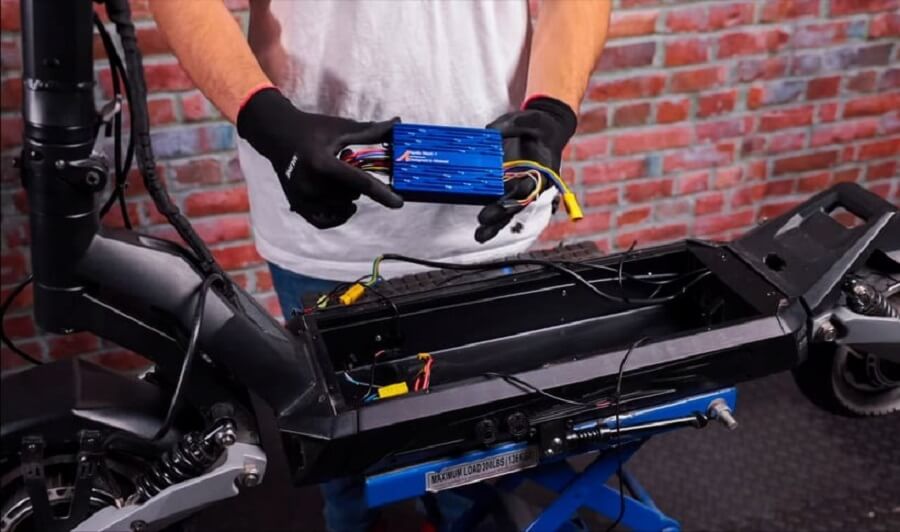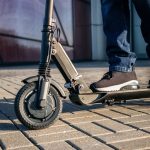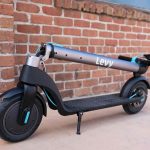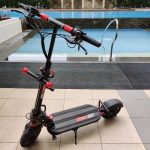Electric scooters have taken urban mobility by storm, offering a convenient and eco-friendly way to navigate city streets. However, behind the sleek designs and zippy rides, the heart of every electric scooter lies in its battery. As an enthusiast and expert in this niche, I’ve extensively tested various electric scooters and their batteries to bring you the ultimate guide on what makes them tick, how long they last, and how to get the most out of them.
What Kinds of Batteries Do Electric Scooters Use?
Electric scooters primarily use two types of batteries: lithium-ion (Li-ion) and lithium-polymer (LiPo) batteries. Li-ion batteries are the most common, known for their reliability and energy density. LiPo batteries, on the other hand, are lighter and often used in high-performance scooters. Both types offer great power-to-weight ratios and are rechargeable. Let’s delve deeper in detail into the various types of batteries that electric scooters use:
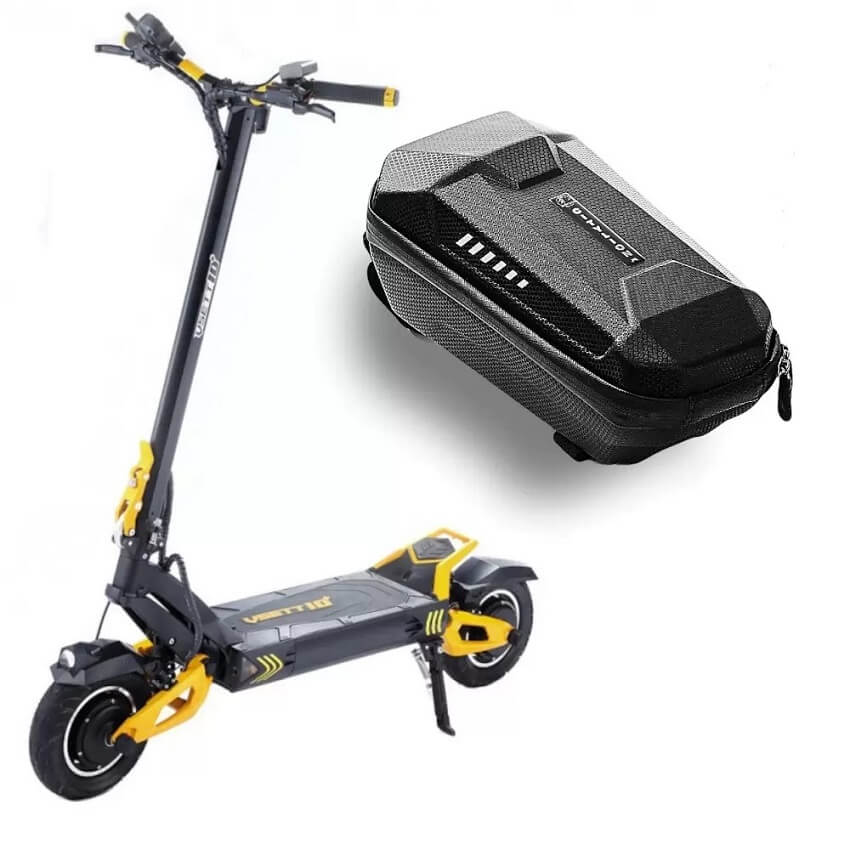
1. Lithium-Ion (Li-ion) Batteries:
- Advantages: Li-ion batteries are the most common choice for electric scooters due to their numerous advantages. They offer a high energy density, which means they can store a substantial amount of energy in a relatively compact and lightweight package. This is crucial for electric scooters, as minimizing weight is essential for portability and performance.
- Longevity: Li-ion batteries typically have a longer lifespan compared to other battery types. With proper care and maintenance, they can last 2 to 4 years or 300-500 charge cycles.
- Fast Charging: Li-ion batteries are known for their rapid charging capabilities, allowing you to recharge your electric scooter quickly and get back on the road.
2. Sealed Lead-Acid (SLA) Batteries:
- Advantages: SLA batteries are cost-effective and have been used in some electric scooters, especially in older or budget models. They are also known for their durability and ability to withstand overcharging to some extent.
- Drawbacks: However, SLA batteries are notably heavier and bulkier than Li-ion batteries. They have a lower energy density, resulting in a shorter range per charge. Additionally, they have a shorter lifespan and may require more frequent replacement compared to Li-ion batteries.
- Maintenance: SLA batteries require regular maintenance, including checking electrolyte levels and ensuring they are not overcharged to avoid damage.
3. Nickel-Metal Hydride (NiMH) Batteries:
- Advantages: NiMH batteries were used in some older electric scooters but are less common today. They offer a decent energy density and are more environmentally friendly compared to SLA batteries.
- Drawbacks: However, NiMH batteries have a shorter lifespan than Li-ion batteries and are not as lightweight. They also suffer from memory effects, which can reduce their capacity over time if not charged and discharged properly.
- Environmental Impact: NiMH batteries are considered less harmful to the environment compared to SLA batteries, which contain lead, but they are still less eco-friendly than Li-ion batteries.
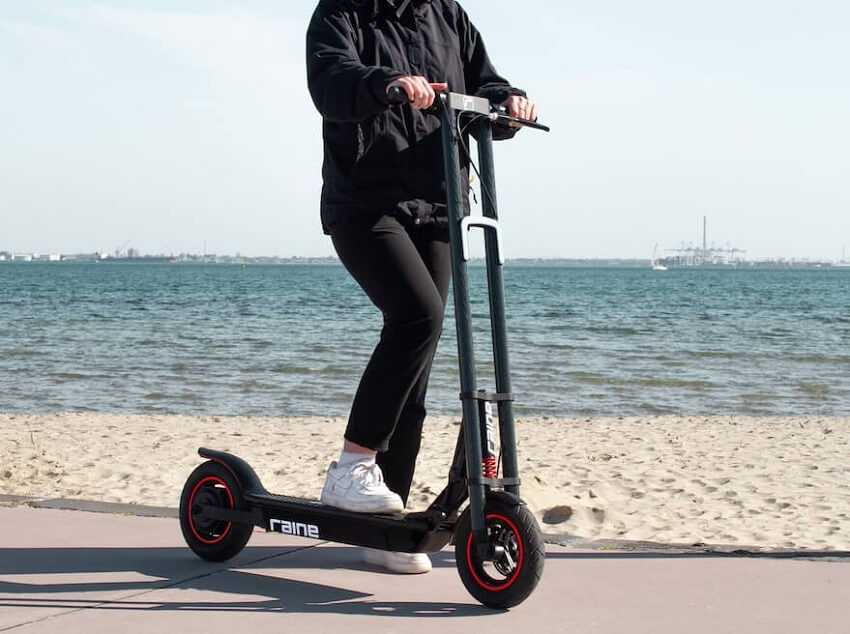
| Battery Type | Advantages | Drawbacks | Common Use Cases |
|---|---|---|---|
| Lithium-ion (Li-ion) | High energy density, lightweight, long lifespan, fast charging. | Higher initial cost, sensitive to extreme temperatures. | Most modern electric scooters. |
| Sealed Lead-Acid (SLA) | Cost-effective, durable, and withstands overcharging. | Heavy, low energy density, shorter lifespan, maintenance. | Older or budgeted electric scooters. |
| Nickel-Metal Hydride (NiMH) | Moderate energy density, more environmentally friendly. | Moderate lifespan, susceptible to memory effect. | Older electric scooters. |
This table provides a quick overview of the advantages, drawbacks, and common use cases for each type of battery used in electric scooters, helping riders make informed decisions when choosing the right battery for their needs.
In recent years, the industry trend has shifted significantly toward Li-ion batteries due to their superior performance, longer lifespan, and lighter weight. These batteries provide electric scooters with the power and efficiency needed to meet the demands of modern urban commuting. When shopping for an electric scooter, it’s advisable to prioritize models equipped with Li-ion batteries to enjoy a more satisfying and reliable riding experience.
How Much is a Replacement Battery for an Electric Scooter?
The cost of a replacement battery for an electric scooter can vary widely depending on several factors. Here’s a more detailed breakdown of the key factors that influence the price of a replacement battery:
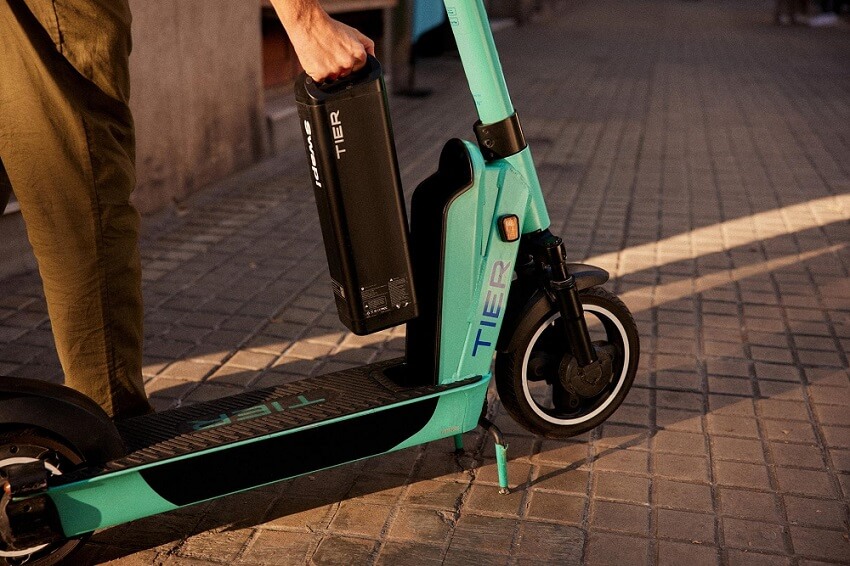
- Scooter Brand and Model: The specific scooter brand and model play a significant role in determining the cost of a replacement battery. High-end or premium scooter brands may have more expensive replacement batteries compared to budget or generic brands.
- Battery Type and Capacity: The type of battery and its capacity (measured in ampere-hours or watt-hours) greatly affect the price. Lithium-ion (Li-ion) batteries are generally more expensive than other types like sealed lead-acid (SLA) or nickel-metal hydride (NiMH) batteries. Higher-capacity batteries, which offer longer ranges per charge, can also cost more.
- Quality and Brand Reputation: Reputable battery manufacturers often produce higher-quality and more reliable batteries. Investing in a well-known battery brand may come with a higher price tag but can provide better performance and longevity.
- Aftermarket vs. OEM Batteries: Original Equipment Manufacturer (OEM) batteries, which are made by the same company that manufactured the scooter, can be more expensive than aftermarket batteries, which are produced by third-party manufacturers. While aftermarket batteries can be cost-effective, they may vary in quality, so it’s essential to choose a reputable aftermarket brand.
- Battery Size and Voltage: The physical size and voltage of the battery pack also influence the price. Larger and higher-voltage batteries tend to cost more, but they can offer improved performance and range.
- Retailer and Location: Prices can differ between retailers and geographic locations due to factors like shipping costs, taxes, and local market demand. Comparing prices from multiple sources and considering online retailers can help you find competitive deals.
| Key Factors | Influence on Price |
|---|---|
| Scooter Brand and Model | High-end brands tend to have more expensive replacement batteries. |
| Battery Type and Capacity | Li-ion batteries are generally pricier than SLA or NiMH batteries. Higher capacity batteries also cost more. |
| Quality and Brand Reputation | Reputable brands often offer higher-priced but more reliable batteries. |
| Aftermarket vs. OEM Batteries | OEM batteries (made by the scooter manufacturer) can be more expensive than aftermarket options. |
| Battery Size and Voltage | Larger and higher-voltage batteries are typically costlier. |
| Retailer and Location | Prices may vary between retailers and geographic locations. |
This table provides an overview of the key factors that influence the price of replacement batteries for electric scooters, allowing consumers to consider these factors when purchasing a replacement battery for their specific scooter model and budget.
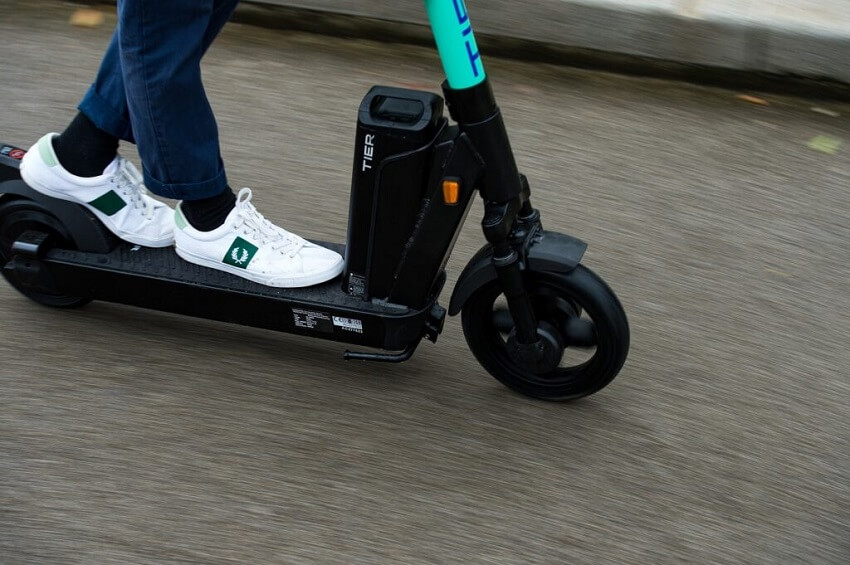
As a general guideline, you can expect to pay anywhere from $100 to $300 or more for a replacement electric scooter battery. High-quality Li-ion batteries with larger capacities and those from well-known manufacturers tend to be on the higher end of this price range. It’s crucial to balance your budget with your specific scooter’s needs and your riding preferences. Keep in mind that investing in a reliable battery can lead to a longer-lasting and more enjoyable electric scooter experience. Before purchasing a replacement battery, consult your scooter’s user manual or the manufacturer’s website for compatibility recommendations to ensure a proper fit.
How Long Does an Electric Scooter Battery Last?
The lifespan of an electric scooter battery is influenced by several factors, including its quality, usage patterns, and maintenance. Generally, a well-maintained Li-ion battery can last 2 to 4 years or 300-500 charge cycles. LiPo batteries have a slightly shorter lifespan. To prolong your battery’s life, store it in a cool, dry place, charge it before it reaches a critically low level, and avoid overcharging.
Additionally, the environment in which an electric scooter battery is used can significantly impact its lifespan. Extreme temperatures, whether too hot or too cold, can lead to accelerated degradation of the battery cells. High temperatures can cause the battery to overheat while freezing temperatures can reduce its efficiency. Therefore, it’s crucial to store your scooter in a climate-controlled space when not in use, especially during the harsh winter months or scorching summer heat.
Moreover, if you plan to store your electric scooter for an extended period, consider partially charging the battery to around 50% capacity before storage, as this helps prevent the battery from falling into a deep discharge state, which can be harmful to its longevity. Properly caring for your battery, along with following the manufacturer’s guidelines, can significantly extend its life and ensure you get the most out of your electric scooter.
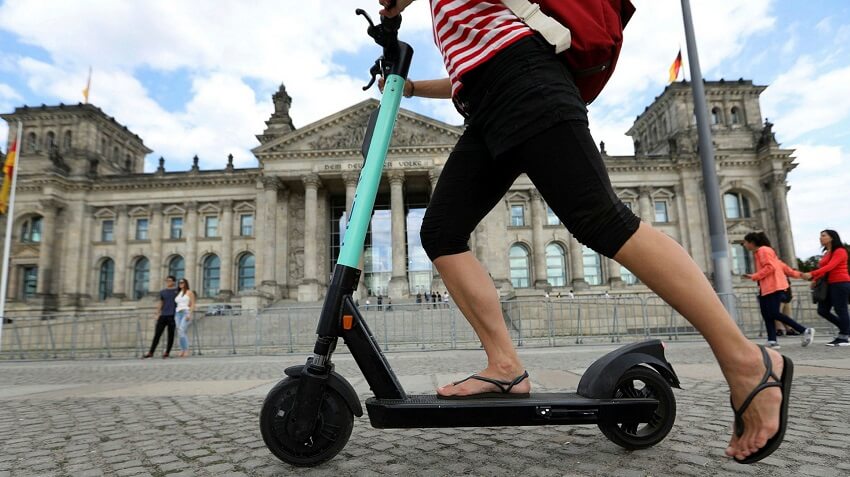
How Do I Charge the Battery in My Electric Scooter?
Charging an electric scooter battery is a straightforward process. Most scooters come with a built-in charger, and you can plug it into a standard electrical outlet. It’s crucial to follow the manufacturer’s recommendations for charging times and avoid overcharging, as it can damage the battery. Regularly check the battery level and recharge when it’s around 20-30% to optimize its lifespan.
How Far Can an Electric Scooter Go on a Full Charge?
The range of an electric scooter on a full charge varies greatly based on factors such as battery capacity, motor power, rider weight, and terrain. On average, most scooters can cover 10-20 miles on a single charge. High-end models can reach up to 50 miles or more. Be sure to check the scooter’s specifications to determine its range before purchase.
Furthermore, understanding the factors that affect the range of your electric scooter is essential for planning your rides effectively. The battery capacity plays a pivotal role; scooters equipped with higher-capacity batteries can generally cover greater distances. Motor power is also a significant factor, as more powerful motors can propel the scooter with ease, especially uphill or on rough terrain. Your weight as a rider influences the scooter’s performance; heavier riders may experience slightly reduced range compared to lighter ones.
Finally, consider the terrain you’ll be riding on – flat, smooth surfaces typically allow for longer ranges than hilly or uneven terrains. It’s crucial to factor in these variables and set realistic expectations for your scooter’s range based on your intended use. By doing so, you can plan your journeys more efficiently and ensure that you won’t run out of battery power during your trips.

Are Electric Scooter Batteries Safe?
Electric scooter batteries are generally safe when used and maintained correctly. However, like any battery-powered device, there is a minimal risk of overheating, fire, or explosion, although such incidents are extremely rare. To ensure safety, stick to reputable brands, avoid aftermarket batteries, and follow the manufacturer’s guidelines for use and charging.
Conclusion
In conclusion, having extensively explored the world of electric scooters and their batteries, I can confidently say that a reliable battery is the lifeblood of a great ride. Investing in a high-quality scooter with a reputable battery is key to enjoying the full potential of electric scooters. Remember to take proper care of your battery through regular maintenance and charging habits to extend its lifespan. By doing so, you’ll not only have a smoother and more efficient ride but also contribute to a greener and more sustainable urban environment. Happy scooting!
How To Make Your Electric Scooter Battery Last Longer Video
FAQ
Q: How long does it take to charge an electric scooter battery fully?
A: Charging times vary, but it typically takes 4-8 hours to fully charge an electric scooter battery, depending on its capacity and the charger’s output.
Q: Can I use a different charger for my electric scooter battery?
A: It’s best to use the charger that came with your scooter or a charger recommended by the manufacturer. Using an incompatible charger can damage the battery or scooter.
Q: How can I extend the lifespan of my electric scooter battery?
A: To extend your battery’s lifespan, store it in a cool, dry place, charge it before it gets too low, avoid overcharging, and follow proper maintenance practices outlined in the user manual.
Q: What should I do if my scooter's battery isn't holding a charge as well as it used to?
A: If your battery’s performance has significantly degraded, it may be time for a replacement. Consult the manufacturer or a qualified technician for guidance.
Q: Are Li-ion batteries safer than other types of batteries for electric scooters?
A: Li-ion batteries are generally safe when used correctly. They have built-in safety mechanisms to prevent overcharging and overheating. However, like all batteries, they should be handled with care.
Q: How can I dispose of an old electric scooter battery?
A: It’s essential to recycle old electric scooter batteries properly. Many recycling centers accept them, or you can check with your local electronics or hazardous waste recycling facilities for guidance.
Q: Can I upgrade my scooter's battery for a longer range?
A: Some electric scooters allow for battery upgrades, but not all models support this. Check with the manufacturer or your scooter’s user manual for information on battery upgrades.
